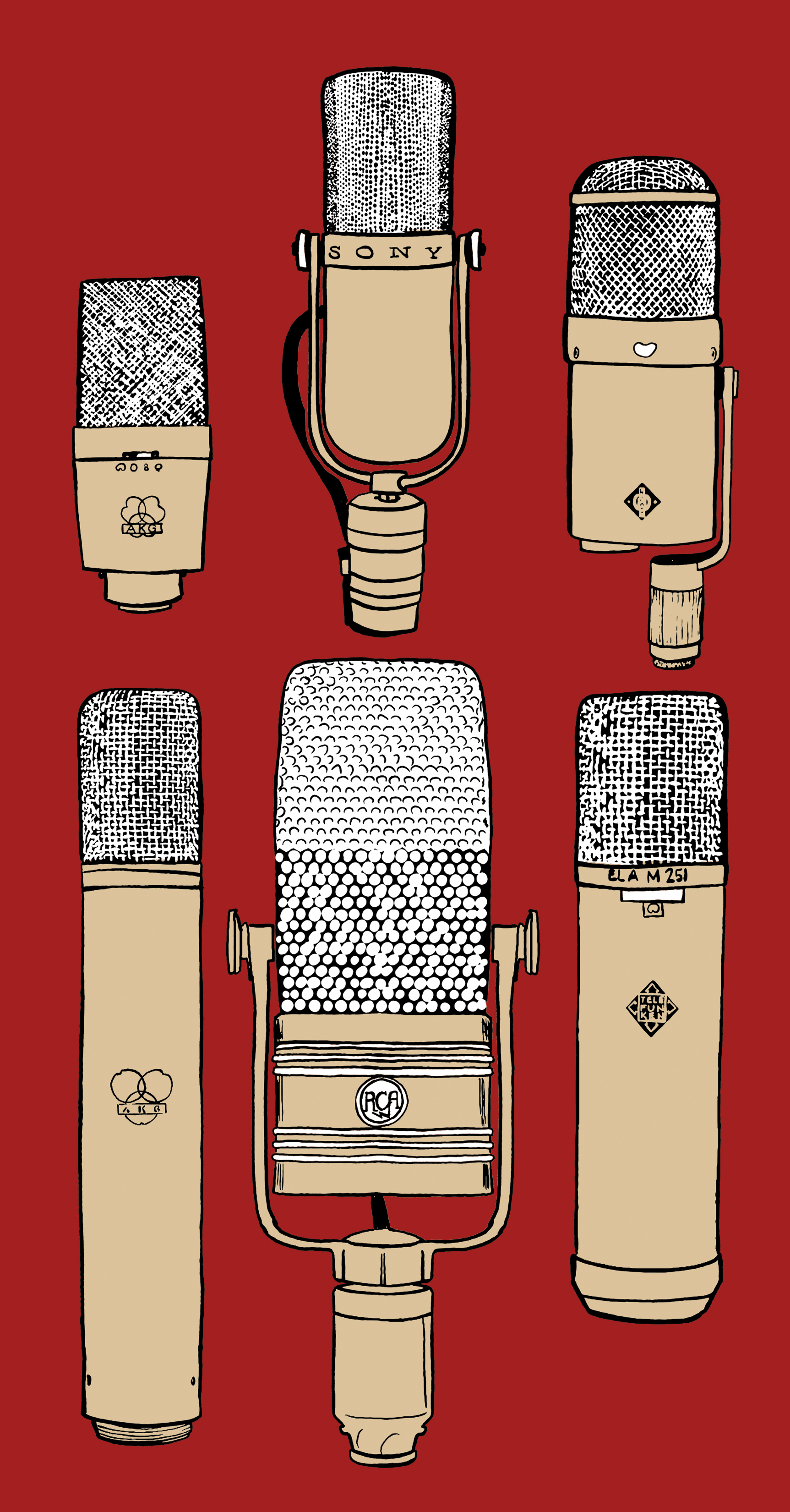Acme Audio has been hitting home runs for the last few years with their Motown D.I. [Tape Op #116] and Opticom XLA-series tube compressors [#86], so when the MTP-66 Motown tube preamp recently popped up on the market, a lot of eyebrows were raised – particularly those belonging to fans of late ‘60s and early ‘70s soul music. Like the aforementioned products, the MTP-66 is another faithful tribute to the golden era of Motown, and similarly, as you could expect at this point, it's absolutely fantastic.
The MTP-66 is presented as a tube DI with a microphone preamp section. To quote the Acme Audio website, the DI is "exactingly reborn using the original 1966 engineering schematics" of the "Motown guitar amp," and the preamp claims to be "based on Motown Engineering's original designs." This standalone lunchbox style unit looks quite impressive (similar to an RCA OP-6) and is finished with a throwback pastel blue paint job. But does it sound as cool as it looks? You bet!
I had about a month to spend with the MTP-66, and in use it became immediately apparent that if you want "that tube thing" it is without question able to provide that and then some. The MTP-66 has a transformative property that I'm not accustomed to experiencing – maybe there's some confirmation bias at play, but everything I ran through it did indeed harken back to that, pungent, vibey, character-rich Motown sound. I want to expand on that phenomenon as there is one enormous contributing factor: the MTP-66 does not offer phantom power. At first, I thought of 15 reasons to complain about this, but after realizing that this unit forces you to use ribbon, tube, and dynamic mics, while preventing you from using solid-state mics (unless you have a separate 48v power supply), I realized what Acme was going for and started thinking along those lines. By default, they're ensuring that your signal sounds one degree funkier than if you'd used your usual solid-state condenser – and I'm okay with that. After all, I'm not using this preamp because I want to be sonically conservative or clinical anyway.
With that mindset, I put the MTP-66 through some rigorous testing, finding it breathed new life into ribbon and dynamic mics while adding an exciting tube sheen to the high end, scooping some mids, and fattening up the low end. It actually made me reconsider what mics I would use in certain instances, knowing that I could achieve this character, which is unusual for me. To provide a basic example, a Coles 4038 ribbon mic [Tape Op #15] on an acoustic guitar is usually too dark in most instances for my taste. Rather than use an outboard EQ during a session, I'd likely just choose a brighter mic. Similarly, you may choose a Sennheiser MD 421 on your snare instead of a Shure SM57, or a Royer Labs R-121 [#19] on vocals instead of an AEA R84 [#38]. That's not to say that those other options wouldn't also sound great, but the MTP-66 will definitely elevate the darker half of your mic locker.
Now, you might be thinking, "If my darker mics become brighter, what happens to my brighter mics?" Well, have you ever heard that super crispy, yet captivating high end on old recordings? Like acoustic guitars that are mostly pick-sound, or vocals that are sibilant but not at all offensive? Cymbals that have intense, yet beautifully present stick sound? The MTP-66 pulls that off effortlessly, and it's a lot of fun to experience. As a point of sonic reference, I found it to be in the same ballpark as a driven Neve 1073, but with the added benefits that come with tubes. Now, don't get me wrong, if you spend some money on a decent tube preamp, you're going to achieve this to some extent – that's what tubes do. But the MTP-66 has some extra funk that I'm definitely not accustomed to hearing from familiar tube preamps. The extent of its intended effect is not at all subtle. If you're a producer who is building songs an instrument at a time and can use the MTP-66 all over the place, you're going to be in tube saturation heaven.
The DI section is really, really impressive. We're all used to the way a bass DI sounds, but this is not what you're used to. The MTP-66 offers a similar profile to the Motown D.I., but with more... everything! A fat, harmonic-rich low end with an upper-midrange presence in all of the right places. I feel pretty comfortable saying that in a blind test most engineers would say this is too polished to be a DI sound. It has the presence and sustain of a bass amp when driven, and oddly enough I could see this working perfectly with heavier bass sounds by providing shape and interest to a typically flat, pedal-heavy tone. If you have a single channel analog synth, you've definitely never heard it this way, though it may be too heavy-handed a change for some.
But should you buy it? The MTP-66 is almost $2,000 for one channel, which elevates it into the boutique tube pre bracket, and puts it out of reach for a lot of folks. That being said, if you're someone who records a lot of throwback music (not even necessarily Motown-style soul, but any ‘60's or ‘70's genre) and are looking to commit to some serious tube vibe up front with no fuss, you're going to love the MTP-66.




_disp_horizontal_bw.jpg)